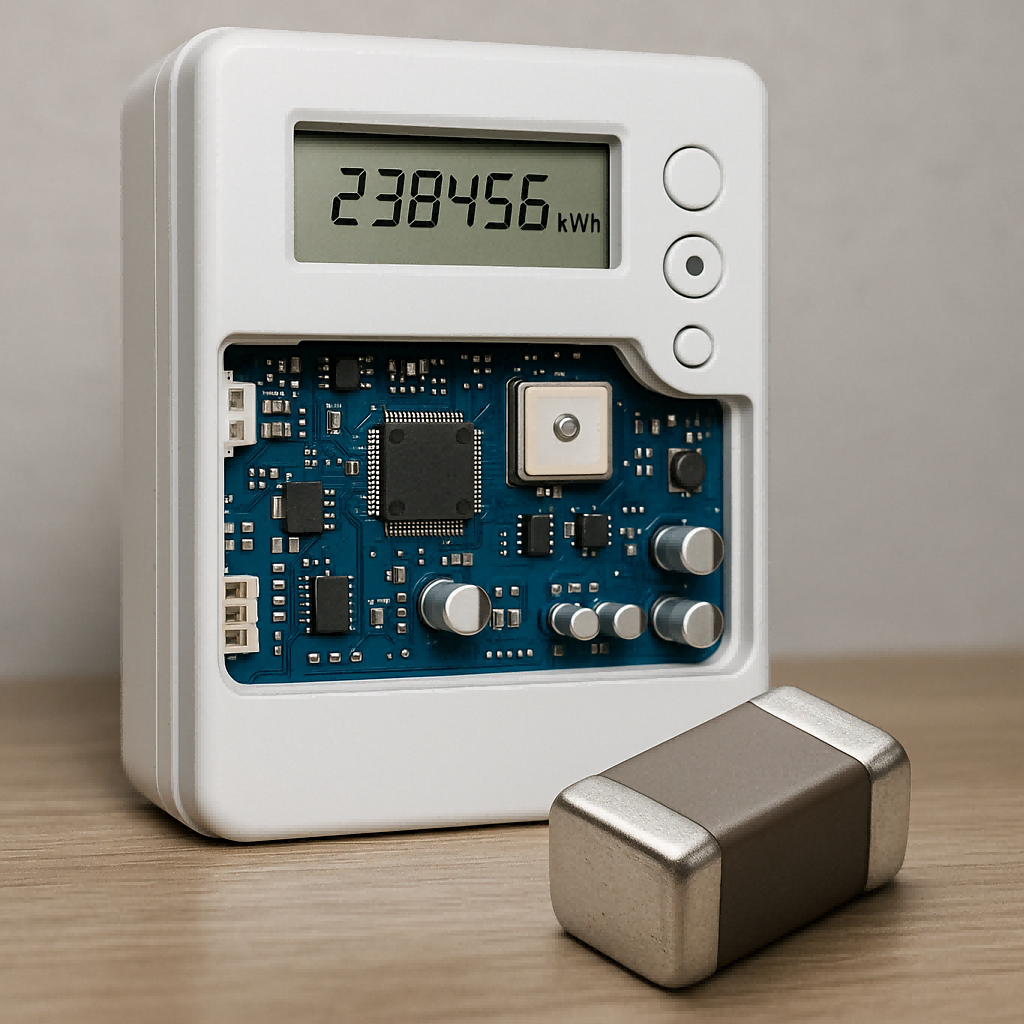This article, through smart meter application cases, deeply analyzes the applications and advantages of MLCCs from brands such as Murata, Samsung, TDK, and Taiyo Yuden in power supply filtering, communication matching, and display modules, and also provides an outlook on MLCC technology trends.

As global demand for smart energy management surges, smart meters are rapidly replacing traditional mechanical meters. To achieve accurate metering, remote communication, EMI suppression, and long-term system reliability, engineers increasingly rely on Multilayer Ceramic Capacitors (MLCCs).
Their compact size, high reliability, and excellent frequency response make MLCCs indispensable in smart metering applications.
In the power path between the meter's main MCU and wireless communication module, MLCCs are primarily used for high-frequency decoupling, noise filtering, and transient suppression.
Used Models:
Murata GRM188R71C105KA12D – Suitable for high-frequency decoupling of 16V power rails.
Samsung CL21B104KBFNNNE – Widely used for power plane noise suppression.
These capacitors help maintain voltage stability and suppress high-frequency noise, ensuring reliable MCU performance and communication stability.
Matching and Coupling of Wireless Communication Modules
For wireless communication modules such as LoRa, NB-IoT, and Zigbee, MLCCs can improve RF signal integrity.
Application Models:
Taiyo Yuden UMK107B7103KAHT – Suitable for high-frequency signal paths from 100MHz to 500MHz.
TDK C1005X7R1H104K050BB – Compact design, suitable for high-speed RF channel matching.
In RF transmission, MLCCs are used for impedance matching and signal coupling, significantly improving SNR and data stability in noisy environments.
Electricity Meter Display and User Interface Module
MLCCs provide low-ESR filtering and electrostatic immunity in the power distribution circuitry of the LCD display module and touch button interface.
Recommended Models:
Samsung CL10A106MP8NNNC – High CV (capacitance-to-volume ratio) design meets the filtering needs of portable devices.
Murata GRM033R61A104KE15D – 0201 size, suitable for ultra-compact control panels.
A smart meter OEM based in Germany deployed over 120 MLCCs per board in their 3-phase energy metering unit, mainly selecting components from Murata GRM, Samsung CL, TDK C, and Taiyo Yuden UMK series.
By using 0402-sized high-frequency X7R MLCCs, they successfully reduced EMI interference in Zigbee modules, resulting in a 36% drop in communication failures. Meanwhile, the use of high-capacitance MLCCs in the power section enabled board space optimization and BOM cost savings.
As the smart grid evolves toward higher integration and reliability, MLCCs are trending toward:
Smaller footprints (e.g., 01005) for space-constrained modules
Higher voltage ratings (≥100V) for distributed power control
AEC-Q200 qualified components for vehicle-integrated energy monitoring
MLCC Application Cases | Smart Meters | Murata Capacitors | Samsung MLCCs | TDK Multilayer Ceramic Capacitors | Taiyo Yuden Capacitors